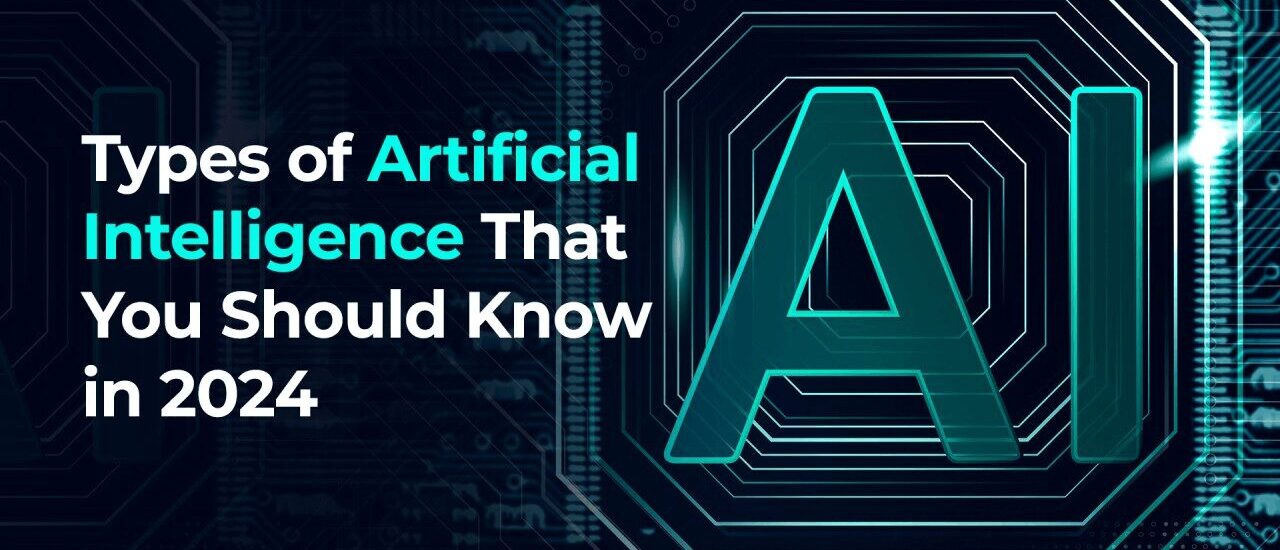


With the rapid development of the field of Artificial Intelligence (AI), comprehending what is the newest type through various sources is a requirement of professionals, business owners, and those who are interested in the topic. In the coming year, the spectrum of AI types will remain important and continue to drive the industries, prompt innovation systems, and redefine human-machine engagement connections. In this exhaustive analysis, I can help you explore the different kinds of artificial intelligence (Machine learning, Deep learning, and reinforcement learning) that are going to dominate the technology sector by 2024.
1. Narrow AI: Sector intelligence caters to specific tasks
Narrow AI which is termed as Weak AI explains the situation where the systems have been developed and trained to accomplish specific tasks or projects. Contrary to narrow AI, the latter specializes in the completion of distinguishable tasks like image intelligence, language translation, and gaming. However, artificial intelligence is usually trained only to do those tasks. Smart AI entered 2024 strongly, becoming the basis of intelligent communication assistants, recommendation systems, and self-driving vehicles.
2. General AI: Progressing, towards AI matching, the level of human intelligence
The edge of artificial intelligence we usually see and go crazy on TV shows we call General AI. General AI is the most advanced form of an artificial intelligence system that can understand, learn, and reason across different applications and domains, like the way the human brain is capable of understanding and solving problems. That said, even though general AI remains out of reach, researchers along with tech developers are still heading in this direction of creating intelligent systems with a broader range of functionalities and adaptability properties. Talking about 2024, research projects such as AI are being developed to attain the human type of intelligence, but it seems that the challenges in achieving entire Human intelligence are still significant.
3. Reactive Machines
Reactive machines are the most elementary kind of unsupervised form of AI. Simply put, reactive machines are designed to react to current existing scenarios or situations. They cannot use past experiences and memories to conclude, hence they are known as reactive machines. Reactive machines have no concept of real-world practicality and hence they cannot work beyond the very basic tasks. However, reactive machines always behave in a set way the way they have been programmed. This kind of AI is considered as trustworthy and reliable, and it will react the same way to the same stimuli every time.
4. Machine Learning: Innovation Towards Intelligent Machinery Systems
Machine learning which is a subset of AI covers the data and algorithms to carry on the process of self-learning in the growth of their performance without getting into a routine for coding. In 2024, machine learning, as an essential part of AI, offers modern and ultimate class solutions in areas such as predictive analysis, natural language processing, and self-driving cars, to personalized recommendations. One of the subcommittees of Machine Learning called Deep Learning, hands AI systems more abilities by allowing them to learn sth similar to data representations.
5. Reinforcement Learning: Learning Through Interaction
Reinforcement learning is the scheme of machine learning whereby an agent learns to make decisions by exploring the environment as well as by getting some rewards or punishments in the form of feedback. In 2024, reinforcement learning will be used for robotics, autonomous systems, and games, where the systems simulate the real world and try to optimize their behavior. Reinforcement learning together with artificial neural networks and higher computing capacity has brought notable achievements in self-driving vehicles and industrial automation.
6. Explainable AI: Serving Transparency and Trust
Explainable AI is an emerging discipline of AI study that concentrates on creating AI systems that can provide causes and justifications for their actions transparently and understandably. With AI applications that are increasingly present in vital areas such as the health sector, finance, and law enforcement domain there is an urgent need for systems that are more transparent and interpretable. Also in 2024, researchers and professionals still researching ways to make AI systems more explainable, they do this to promote trust, accountability, and ethical choice-making.
Conclusion: The recognition of the Diversity of AI
In the final analysis, in 2024, artificial intelligence will be shaped by diversity, innovativeness, and continuous growth. The range of AI systems includes specialized narrow AI systems, aspirational general AI, machine learning (ML) algorithms, and explainable AI (XAI) frameworks. These AI types are gradually revealing the concept of intelligence and transforming the technological paradigm step by step. As a human race, I think we will need to explore and leverage this diversity yet responsibly capitalize on the rich opportunities that AI presents as we explore the future of artificial intelligence.